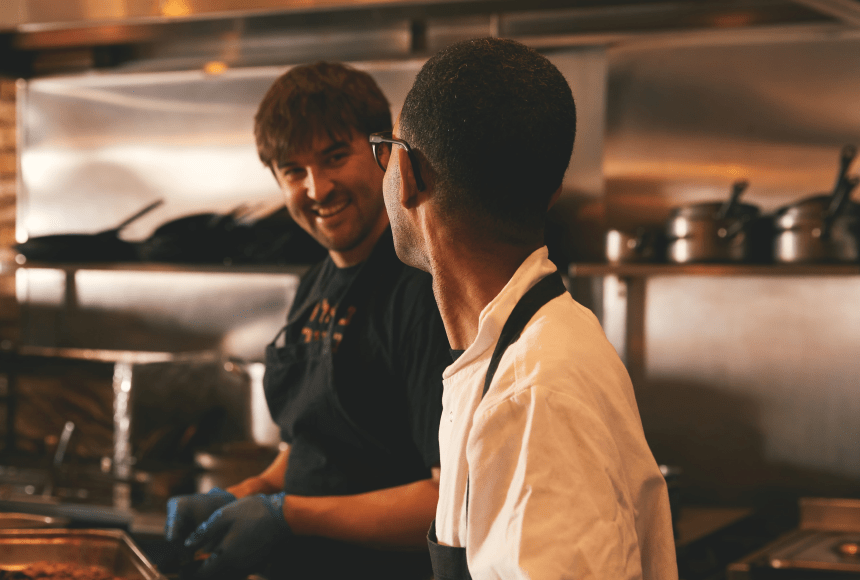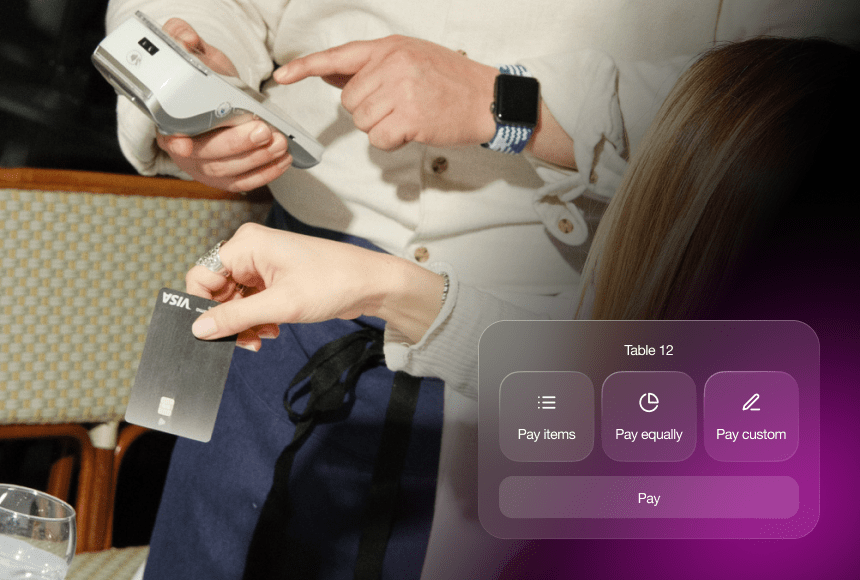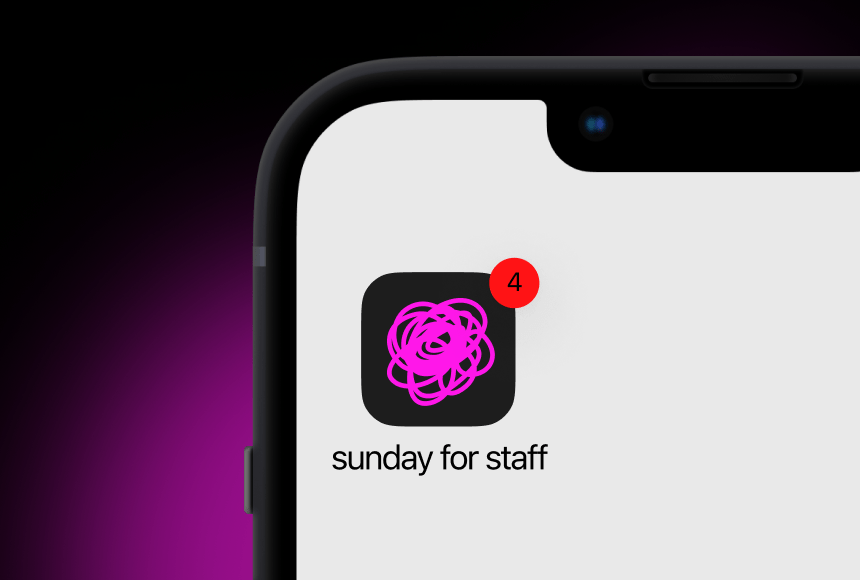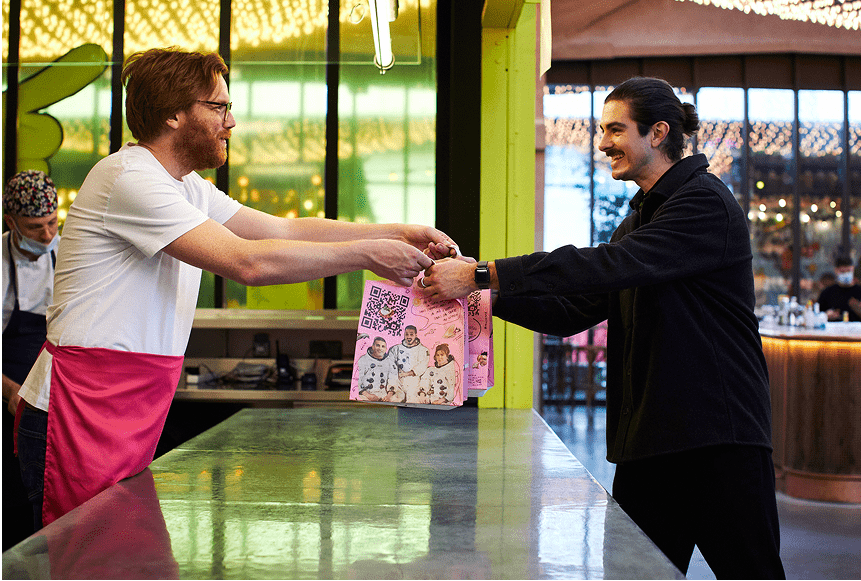
Empower Your Restaurant by Embracing Every Customer Opinion
The Evolving Landscape of Restaurant Visibility
Picture this: you’ve just launched a new dish, something bold and experimental. You’re proud of it and can’t wait to see how your customers respond. Twenty years ago, you might have overheard a few compliments in your dining room or perhaps a grumble or two. Today, feedback isn’t just whispered at a table; it’s broadcast online for everyone to see. As a restaurant owner in the UK, you no longer rely solely on word of mouth to spread your reputation. Now, Google reviews, social media posts, and dining platforms shape how potential customers perceive your establishment.
Online standing has become a restaurant’s new currency. According to a 2022 “The Future of Restaurants” report by Square (The Future of Restaurants report by Square), 91% of diners check online reviews before choosing a place to eat. For many, that’s now the very first step when deciding where to book a table. Not only do online reviews reflect real dining experiences, but they also serve as potent signals for search engine algorithms that rank your restaurant in local searches.
That means your digital reputation can lift you from a hidden gem to the top hotspot in your community. But reaping that reward demands a keen focus on feedback—both good and bad—and a smart plan to turn opinions into active marketing fuel. Let’s explore how you can master the art of online reviews and turn each one into a powerful growth lever for your business.
Why Every Opinion Matters More Than Ever
Some restaurants boast five-star ratings, glowing written feedback, and lines out the door. Others struggle to maintain enough traffic to stay afloat. The primary difference often lies in how they handle feedback and adapt accordingly.
People trust other diners’ words because they see them as impartial, real experiences. Here are a few reasons why every review has the potential to shift your brand image—dramatically:
- Social proof: Potential guests trust peer recommendations. A positive review reassures them that their money, time, and appetite are in safe hands.
- Influence on local search ranking: Google’s algorithm takes into account both the quantity and sentiment of local reviews. The higher your average rating—and the more reviews you have—the more visible you become.
- Operational insights: A piece of constructive feedback can highlight bottlenecks, whether in service speed or dish presentation, giving you data to make tangible improvements.
- Revenue growth: Research reveals a direct link between higher star ratings and increased customer spending. Even a 0.1-star increase can have a noticeable impact on your bottom line.
When you consider that a single glowing testimonial can spark the curiosity of hundreds, if not thousands, of prospective diners, every comment carries weight and an opportunity to fine-tune your offer.
Turning Negative Feedback into Constructive Lessons
No one likes to see a customer walk away unhappy. However, it’s unrealistic to expect perfect performances at every service. Mistakes happen—food might arrive a bit cold, or a staff member might have an off day. At times, even the best-run kitchen can catch a tough break.
The real issue arises not from the occasional misstep, but from how you handle it. Responding with grace, humility, and a genuine desire to make amends can quickly defuse tension. It also demonstrates, to any onlooker, that you value feedback and customer care. Here’s how to leverage critical comments effectively:
- Acknowledge swiftly: Speed matters. A timely reply indicates that you are responsive and deeply committed to your patrons’ experiences.
- Apologise sincerely: Diners want to feel heard and validated. Start by genuinely saying “we’re sorry you had this experience,” which shows empathy and intent to understand.
- Address the issue individually: Offer a direct way to resolve their complaint. You might request a private conversation to dig deeper, or provide a small courtesy gesture to minimise their dissatisfaction.
- Propose a future solution: Explain what you’re going to do differently next time. Whether you speak about retraining staff or refining a cooking process, make it clear you’re taking tangible steps to grow.
Much like salvaging an overly salty dish with the right technique, a well-managed negative review can preserve—and even enhance—the overall flavour of your reputation. More often than not, people respect a brand that works actively to right its wrongs. In many cases, turning an angry guest into a satisfied repeat customer can lead to some of the most memorable positive reviews.
Showcasing Positive Reviews as Marketing Gold
Positive reviews can make your restaurant shine like a Michelin star. Imagine how many prospective guests decide to visit after reading detailed praise: “The staff are wonderful, the ambiance is relaxed yet refined, and the chocolate fondant is out of this world!” That’s the kind of endorsement online users trust far more than any paid advertisement.
Try these methods to highlight your positive reviews while maintaining integrity and authenticity:
- Feature them on your website: With permission, quote small snippets of reviews on your home page or dedicated testimonials section. This transforms casual site visitors into intrigued diners.
- Spread the love on social media: Celebrate “review of the week” on your platforms. Not only does this give existing customers a feel-good moment, but it also entices new ones to explore your menu.
- Encourage user-generated content: Some guests will share mouth-watering photos of your standout dish. Engage with these posts, repost (with the diner’s permission), and let their voice tell your story.
- Involve the team: Print out especially heart-warming comments, stick them on a noticeboard in the kitchen or staff room, and give your team the recognition they deserve. This fosters a positive staff culture and motivation to keep those great reviews rolling in.
Unlike a flashy billboard campaign that costs a fortune, genuine praise from real people is a powerful, cost-effective marketing tool. It highlights exactly what resonates with your audience—authentic cuisine, warm service, and a memorable experience.
Integrating Reviews into Your Overall Strategy
Online reputation management shouldn’t be seen as a side project. It needs to be fully baked into your broader marketing efforts and day-to-day operations. After all, the more integrated your approach, the smoother it becomes to collect feedback, analyse trends, and take action.
Consider a few of these steps to embed reviews into your restaurant’s wider strategy:
- Regular feedback sessions with staff: Dedicate time every month or fortnight to discuss recent reviews—both positive and negative. This keeps your team in the loop and fosters an environment of continuous improvement.
- Thank your reviewers: Whether someone leaves you a rave review or a thought-provoking critique, show appreciation. Polite follow-up messages or short personalised notes go a long way in strengthening loyalty.
- Implement immediate feedback opportunities: Provide an easy channel for customers to leave reviews straight after their meal. For instance, if you use a system like sunday to streamline payment through a QR code, consider offering them a seamless link to write a public review. This instant approach captures their sentiments while the experience is fresh.
- Link reviews to marketing campaigns: Launching a new seasonal menu? Why not highlight relevant positive feedback from last year’s launch to build anticipation?
When reviews feed directly into your planning and promotion, you’ll find that each piece of customer feedback becomes a treasure chest of insights, helping you refine dishes, test price points, or justify extended opening hours. Rather than seeing reviews as a separate chore, you can weave them into daily decisions that shape your restaurant’s future.
Responding to Reviews: Best Practices for Maximum Impact
Crafting a considered reply to a customer review is both an art and a science. You want to be objective yet human, concise yet warm. Below are a few best practices that balance all of these elements:
- Use the reviewer’s name (when available): Personalisation is often a small but mighty way to show that you genuinely see them as an individual.
- Stay positive and professional: Even if the feedback feels unfair, responding with hostility is never a good look. View negative critiques as valuable lessons and reply from a place of respect.
- Show gratitude: A “thank you” to those who take the time to share their insights goes a long way, regardless of whether their feedback was glowing or critical.
- Stay on topic: Don’t confuse the reader with needless tangents. Address points from their feedback directly and succinctly.
- Encourage further conversation offline: Offer a direct channel to speak if the situation requires additional attention. This helps keep your public review replies concise, while showing you care enough to follow through.
When effective replies become part of your routine, prospective customers see active engagement and reassurance that you’re committed to delivering the best possible experience. Dining is, after all, as much about hospitality as it is about the flavours on the plate.
Marrying Digital and Physical Experiences
No matter how friendly and efficient your staff are, modern diners also expect a frictionless digital journey. From discovering a new restaurant online to seamlessly settling the bill, every touchpoint matters. Your online reputation doesn’t start and stop at the door—it’s part of the entire “feast” of experiences you serve up.
- Streamline payments: Tools like sunday give your guests the option to scan a QR code, pay within seconds, and add a tip without any back-and-forth for the card reader. A faster checkout often translates into a happier final impression, which is more likely to produce a positive review.
- Post-meal engagement: Once people pay through digital means, you can gently invite them to leave a Google review. Capturing real-time reactions at the peak of satisfaction often delivers the most authentic endorsements.
- Consistent branding across platforms: Keep your messaging, imagery, and tone cohesive from your website to your menu. Consistency across all channels helps prospective diners recognise your establishment quickly and builds trust.
By marrying digital and physical interactions together, you ensure a cohesive journey. It’s like pairing the right sauce with a dish—each element augments the other for a delightfully satisfying experience.
Staying Proactive with Continuous Learning
Trends change, diner preferences evolve, and technology advances at a swift pace. Maintaining a thriving online reputation demands more than a one-off campaign—it’s a continuing commitment to learning from feedback. Here are a few ways to stay ahead of the curve:
- Monitor new platforms and features: Whether it’s a newly popular restaurant booking app or an emerging social media platform, keep tabs on where people are talking about your restaurant.
- Participate in industry communities: Engage with local associations like UKHospitality to exchange ideas, discover best practices, and even access data that can guide improvements.
- Offer experiential upgrades: Reading reviews might reveal that diners love your mains but are lukewarm about the décor. Champion small (or big) improvements in décor, table layout, or staff training, showing you’re always listening.
- Provide staff development: Train your team on best review response practices. Give them the authority to solve issues on the spot—empowered employees often create richer customer interactions.
Staying proactive doesn’t just help you dodge negative buzz—it builds positive expectations. After all, a consistent pattern of adapting and replying to your patrons signals that you’re serious about giving them the best possible experience, from starter to dessert.
Nurturing Lasting Connections Beyond a Single Meal
While a great lunch or dinner might be enough to impress first-timers, you want those diners to return. Curating a loyal base of customers who frequently share enthusiastic feedback takes effort. But it’s an effort worth making. Loyal customers often encourage their friends and family to visit, and repeat guests who become vocal supporters can have a huge impact on your future success.
Here’s how to forge deeper relationships:
- Create memorable events: Special nights—like live music performances, meet-and-greet with local producers, or themed dinners—are shareable experiences that inspire high volumes of positive buzz.
- Personalise your loyalty approach: Offer a cardless loyalty programme linked to your digital payment system, so diners don’t lose a physical card. Let them feel personally rewarded each time they choose your venue.
- Seek real feedback updates: After you tweak or introduce a new menu item, invite your customers to share what they think. This kind of engaged dialogue shrinks the gap between diner and chef, making guests feel like co-creators of the final product.
- Use your brand’s voice clearly: Let your restaurant’s personality shine through. Whether you pride yourself on being a cosy family-run bistro or a quirky vegan café, keep that identity at the forefront of your communication.
Online reviews reflect the entire journey, from the atmosphere and staff interactions to the last bite of dessert. When you consistently deliver a memorable time and respond in a personable manner, you sow the seeds for lasting advocacy in the digital realm.
The Path Forward: Building an Ecosystem of Positive Reviews
Online reviews are more than just a weekly chore on your to-do list. They represent a living, evolving conversation with your guests—one that helps prospective diners decide whether to choose your establishment or move on. Harnessing feedback effectively can increase table turnover, enhance your bottom line, and cultivate a brand identity that resonates with people far beyond your postcode.
Think of your digital reputation as a surprising secret ingredient in your kitchen. It takes a few tried-and-tested techniques to blend it all just right:
- Respond to every review (good or bad) with warmth and professionalism.
- Invite feedback promptly using technology that fits seamlessly into the diner’s journey.
- Spot trends in your reviews to make data-driven menu and service improvements.
- Champion your top reviews on social media, in your restaurant, and on your website to amplify their ripple effect.
- Encourage staff at all levels to see feedback not as criticism, but as a tool for growth.
Your role as a restaurant owner involves not only delighting palates but also engaging proactively with the people who enable your business to thrive. Adopting a holistic approach that merges offline excellence with online rapport can help you develop a dedicated following that proudly shares their glowing experiences.
Looking ahead, solutions like sunday weave in neatly to strengthen relationships and harvest timely reviews. Once diners settle their bill with a quick scan, you can offer them a chance to post their thoughts on Google straight away. That bridge between “finished meal” and “public feedback” is shorter than ever—making it easier to transform every satisfied diner into a public advocate.
In the end, that’s the new face of restaurant marketing: blending culinary artistry with solid online strategy. By appreciating the influence of each review and responding with openness, you can set the table for lasting success.
Find out more today
Drop us your details below and we’ll reach out within the next 24
Get the full, detailed picture.
sunday elevates your business with insightful data, instant feedback and precise analytics.




